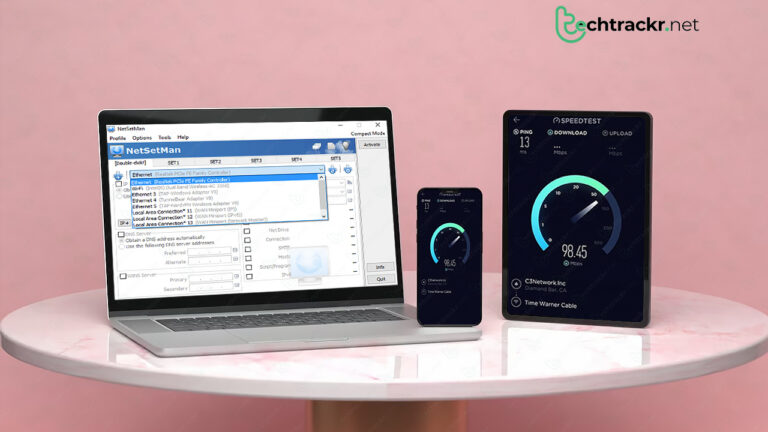
Whether you’re working from your couch, binging on Netflix, or streaming your game sessions on Twitch, you can never have enough bandwidth. Even if your router is hooked up to gigabyte fiber, everyone could use a boost in getting faster internet throughout the house.
Having the best wires outside might not cut it—getting rid of sluggish speeds and Wi-Fi dead spots is mostly in your hands. To assist, here are some tips to troubleshoot and, with any luck, enhance the Wi-Fi both inside and outside your crib.
Change router’s position
Stashing that router in the closet? Not the best move. Walls, cabinets, and even bookshelves can mess with your Wi-Fi signal. Actually shifting the router around can seriously amp up your speeds and extend how far its wireless reach goes. The ideal spot varies for each home, but avoid tucking your router in a corner, under a cupboard, or inside a drawer—aim for a more central and noticeable spot for better results.
You might have to get a bit creative with the cables to relocate your router, but the payoff will be worth it. The idea is to bring your main devices—consoles, laptops, etc.—as close as you can to your router. Devices that don’t demand a ton of bandwidth, like smart thermostats, don’t need to be right next to the router.
Also Read: How to back up your data and stay worry-free
Make use of ethernet cables
We might overlook it sometimes, but hey, wires are still a thing! In fact, it’s right there in our name. Let’s be clear: you don’t have to rely on Wi-Fi. A wired connection to your router is quicker and more stable than Wi-Fi, and it won’t get messed up by other gadgets or giant fish tanks. The downside is it restricts where your devices can go, and it’s a bit less convenient.
But when it comes to devices that crave the speediest internet—like a gaming console, desktop PC, or streaming box—it’s usually totally worth the trouble to hook up a wire. Your router likely has a few spare Ethernet ports, so all you need is a cable.
Switch Wi-Fi channel
Wi-Fi signals operate on different channels. Your router picks a specific Wi-Fi channel to chat with the devices in your crib. But if your neighbors are rocking routers on the same channel, things can get crowded fast. Switching channels can fix this issue.
Every router deals with this in its own way. If you’re not sure, peep the documentation or search online for instructions, but you should find the option in the device settings. Give channels 1, 6, and 11 a shot—they tend to have the least interference when you’ve got a bunch of devices connected.
Get an upgraded Wi-Fi router
Routers come in all shapes and sizes, and the prices can be all over the place. If your place has spots with no Wi-Fi or it’s moving at a snail’s pace, it’s time to tweak where and how far your Wi-Fi reaches.
If you’ve got a big crib, go for a router that can team up with “repeaters” to shoot signals into every nook and cranny. Smaller homes and apartments can usually do just fine with a simpler setup. For bigger cribs, our suggestion is a mesh network—set up multiple router nodes all around your place.
Install a Wi-Fi extender
If playing with your router settings feels like too much, and you’ve got a bit of cash to throw around, grab yourself a Wi-Fi extender or repeater. These gadgets plug into a random wall socket, link up with the wireless internet your router is sending out, and give it a boost.
Also Read: How to clean your computer from malware
Use electrical wiring
Instead of using extenders, you can go for a powerline kit. Digital signals can travel through electrical wiring, and powerline devices are made to make the most of that.
Here’s how it goes down: You hook up a powerline plug to your router, pop it into a wall socket. Toss another powerline plug into any other room, and it can give you a wired or wireless link to that spot. Sure, there might be a bit of a speed dip, but it’s an easy and efficient choice. As long as your place isn’t ancient, the electrical wiring should support this, but it’s smart to grab your kit from a store with a solid return policy, just in case.
Password-protect Wi-Fi and remove unused devices
You likely already know this, but your Wi-Fi network needs a password. It’s your first line of defense against hackers and stops neighbors from piggybacking on your bandwidth, which can seriously slow you down. Make sure to go for AES encryption—it’s the most secure and won’t drag down your speed.
Having a bunch of devices hogging the Wi-Fi can cause issues. Hook up whatever you can to Ethernet, and disconnect anything that’s plugged in but not necessary (like that “smart” tea kettle you could never get to work). Only let the things that actually need the internet have it.
